The Fractal Design Node 202 Case Review: Mini-ITX Gaming For the Living Room
by E. Fylladitakis on June 6, 2016 9:15 AM EST- Posted in
- Cases/Cooling/PSUs
- Mini ITX
- HTPC
- Fractal Design
- ITX
The Interior of the Fractal Design Node 202
The removal of the top cover is an easy process, as the panel comes off after the removal of its holding screws from the bottom of the case. This is also necessary for the user to gain access to the top air filter, as it is attached to the inside of the top cover.
The lower cover can also be removed, and has to be removed in order to access the lower intake filters beneath the video card and the PSU. This cover is not held with screws but with plastic clips, allowing it to come off after undoing them one-by-one. After the cover has been removed, the magnetic filters can be removed from the bottom of the case.
Fractal Design essentially ditched 5.25” and 3.5” devices completely and organized the interior of their case so as to fit a standard gaming system with a full size video card. The interior is essentially split into two areas, one for the motherboard and the PSU to the right and one for the video card to the left. The two areas are split by a steel support wall.
The PSU compartment is small, allowing the use of SFX units up to 130 mm long. In order to install the PSU, the frame needs to be removed, attached to the unit and then reinstalled along with the PSU.
An ITX motherboard just barely fits inside the Node 202, with minimal space around the board for cable management. After the PSU has been installed, managing the cables using the cable ties is a somewhat tedious process. There is little clearance for a cooler and only coolers up to 56 mm tall may fit, which can cause compatibility problems even with some high-performance stock coolers. There is also no slot for a low profile card and expansion cards can only be installed by using the supplied PCI Express riser card.
Only two 2.5” drives can be installed in the Node 202, on the metallic drive cage that is attached to the middle support wall between the compartments. The cage is designed so that one drive will be in the left compartment and the other drive will be in the right compartment. The support wall has an opening where the cage is installed, allowing the passage of cables for the drive in the left compartment of the case.
The most important feature of the Node 202 is its capability to support full size PCI Express video cards. However, there are limitations. The card can only be up to 310 mm long and up to 50 mm thick, if no intake fans have been installed beneath the card (or if 10 mm low profile fans were installed). If 120 mm × 25 mm intake fans are installed, the thickness of the card is limited to 35 mm. Although these may sound constrictive, the vast majority of mainstream gaming cards do fit in the Node 202 (ed: a reference GeForce GTX 1080 would be 266mm long). The small number of custom, top tier cards that do not fit would also be incompatible with the low power output of the supported SFX PSUs and possibly cause thermal issues as well.
Fractal Design has also placed a support for the card that can be adjusted via a screw at the bottom of the case. This may seem redundant for when the case is placed horizontally, but vertical placement could have a heavy card slipping out of the PCI Express slot, so the case design takes this into account.
An overall look with a system inside the Node 202 reveals that the build will be tight, with little room for cable management or modifications. It may be wise to select either Fractal Design’s own Integra SFX 450W PSU, which has been designed with this specific case in mind, or a modular SFX PSU.
Regardless the tight fit, a gaming system using an efficient CPU and mainstream video card, along with one or two SSDs, does fit in the Node 202 without issues, creating a very good gaming system. However, this is essentially the sole purpose of the case. If an expansion card is not installed (e.g. the user is content with integrated graphics) then the left compartment essentially is a dead area. No advanced liquid cooling solutions can be installed due to the wall separating the compartments and there is no way to support 3.5” drives without modifying the case. This prevents the Node 202 from being used as a file server or as a HTPC with large internal drives hosting media collections.


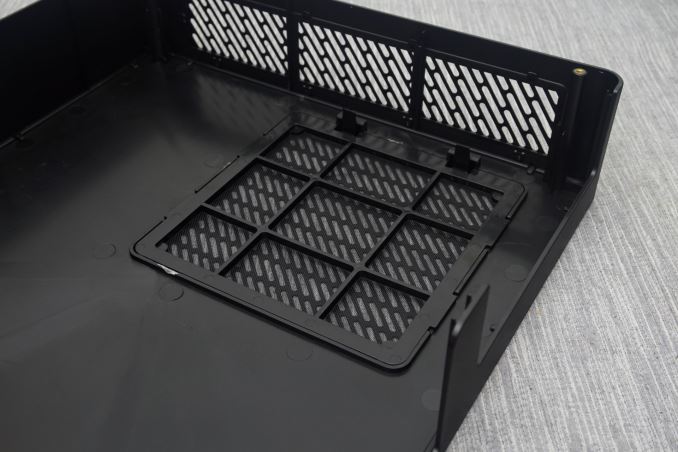
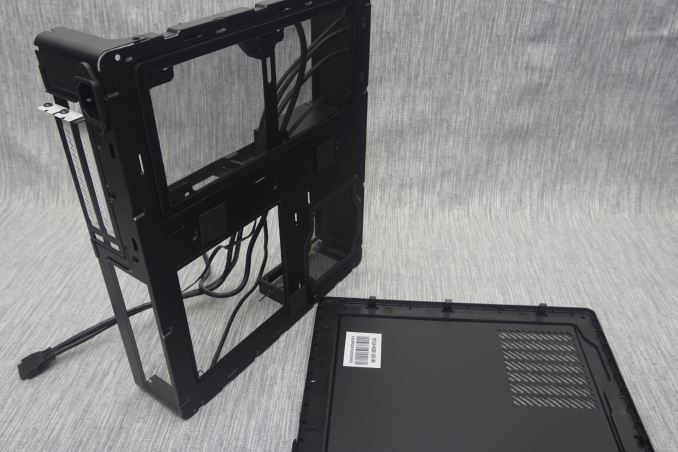
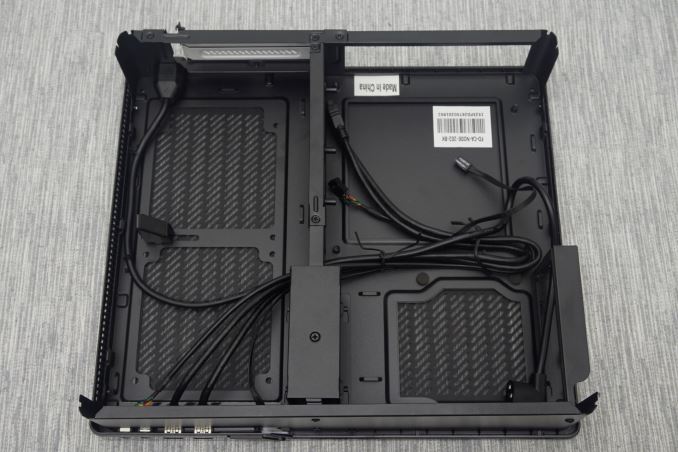
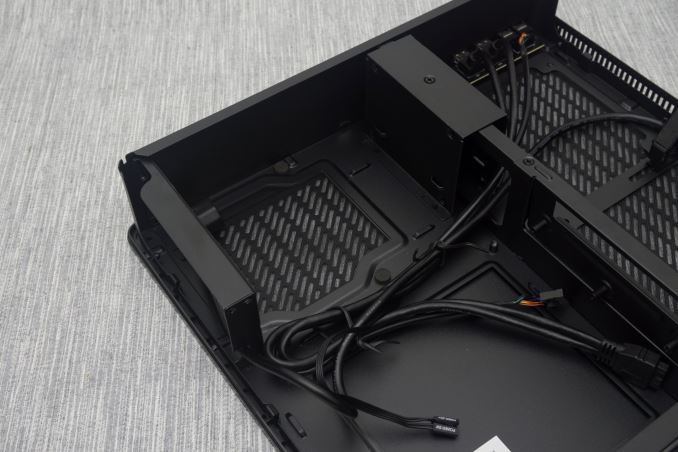

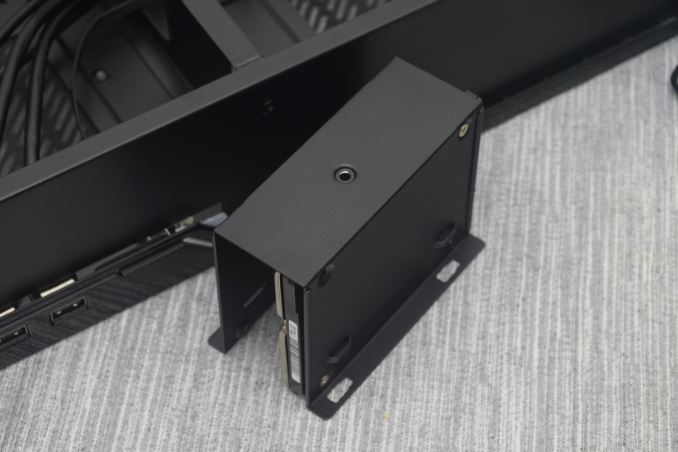
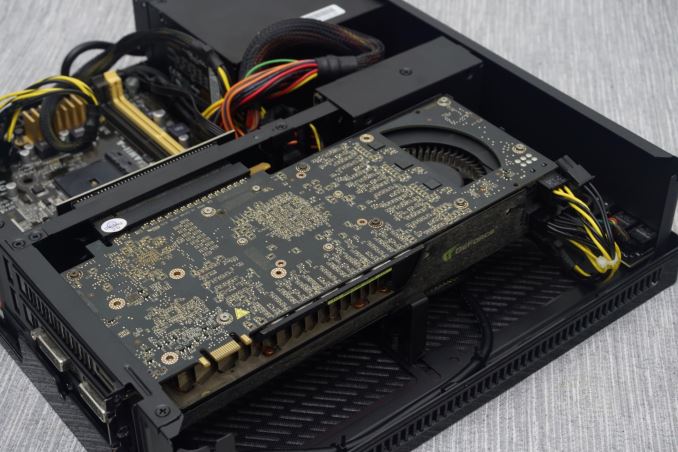
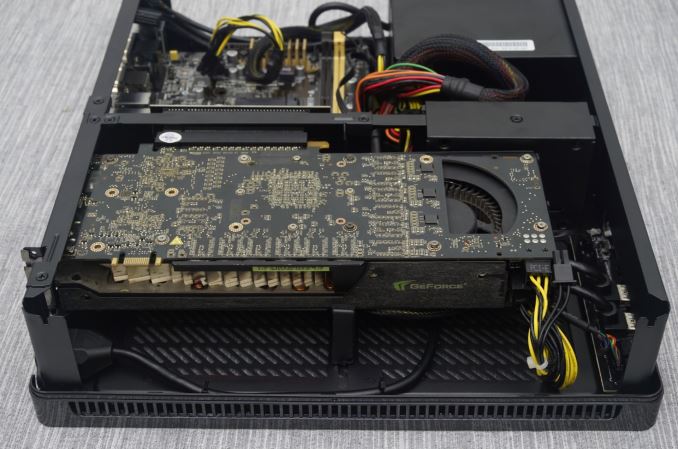
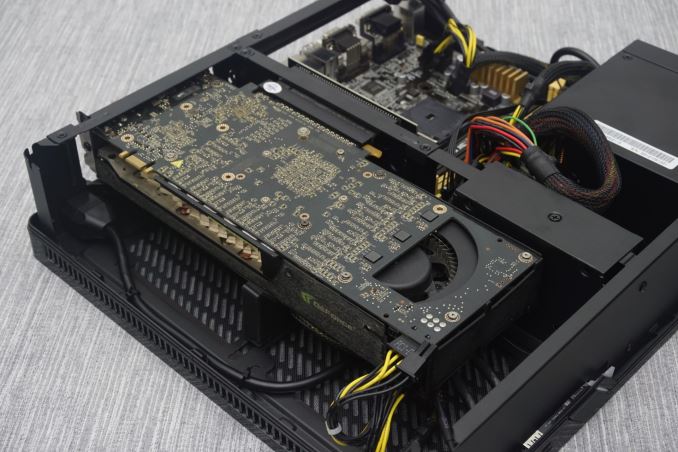
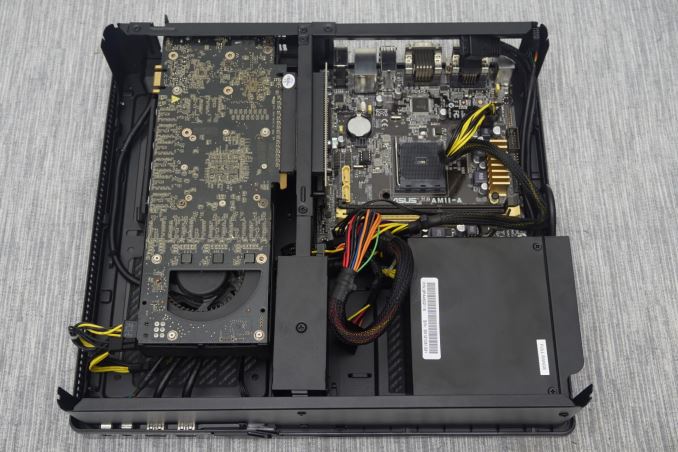








64 Comments
View All Comments
JoeyJoJo123 - Tuesday, June 7, 2016 - link
Hi ameanie,Given your use case of:
Small as possible
High End Gaming
Video/Image Editing
Video Streaming
I believe you've chosen 6700k + GTX 1080 well, and they're solid choices for your use-cases. Understandably, now you're having troubles considering how to enclose these two parts, and you want as small of an enclosure possible while still maintaining the performance you need.
1) Given that you want to do image editing, heavy Photoshop transformations benefit a lot from more RAM. Video editing benefits a lot from RAM, too. This reasonably justifies 16GB of RAM.
2) Given that you want to do video editing, particularly since uncompressed 1080p video has a high bitrate, this reasonably justifies having a large "scratch drive" SSD, as the high sequential and random read speeds allows you to seek through video and preview it much faster than you could on a normal drive. Also, given that you want to do video editing, you'll also want a fairly large 3.5" HDD to store video files.
3) Gaming is justification enough to get an unlocked SKU and Z170 series motherboard for overclocking. Overclocking isn't too big of a necessity if you were just going to image/video editing and streaming, though.
From all this, I gather you'd need something bigger than what the Node 202 can offer. I made the following PC Part Picker list for you to review:
pcpartpicker(dot)com/list/8w8RsJ
It's pricey, but keep in mind that you make at least three sacrifices with small form factor builds.
1) Internal space. (But you get more external space outside of the case, around your desk, and such.)
2) Cost. (SFF parts cost more than regular sized desktop components.)
3) Decreased Noise/Thermal performance. (To get adequate thermal performance, you need faster fans; faster fans lead to higher noise; higher noise in a small case with no sound dampening makes for a tiny and relatively noisy PC.)
Also, keep in mind that
1) Parametric filters update to the cheapest price to get an item that fits that filter in the list.
2) It's particularly pricey since many of the components aren't really at good prices at the moment.
3) Kaby Lake can launch before you save up enough to get your PC parts; Don't commit to buying processor and motherboard until it's the last parts you need, as these may be superceded by a new, better version. The same thing goes for the GTX 1080, in terms of a potential GTX 1080 Ti launch.
dartico - Friday, June 10, 2016 - link
What do you think about an i76700K (no OC) and a reference 1070 or RX480 into this case? I'm planning my next build with those components.bill.rookard - Monday, June 6, 2016 - link
I would say that if they wanted to, Fractal Design could easily fit (design) a 2 x 3.5" drive cage or 4 x 2.5" cage as an adapter if the end user forgoes a video card - thus this could easily become a small file server / NAS / HTPC.I'm rather surprised that they didn't think that through. It would be trivial to add a few rubberized mounts and a single stamped piece of steel.
JoeyJoJo123 - Tuesday, June 7, 2016 - link
Yeah, this isn't the Node 202's strong point for two reasons.1) It wasn't designed that way. And even if they did what you said, then it'd still be worse than getting a 2U server case with hotswap drive bays, and hotswap drive bays are a big convenience when having some kind of fileserver.
2) They have a PC case that suits that use-case better: Node 304. And the 304 fits 6 drives, if you're not using a graphics card.
Still, having that option would be NICE, but I'm just saying they probably dismissed it as that wasn't the target audience that this PC case is intended for, thinking that audience would get a different case they offer instead, like the 304.
romrunning - Monday, June 6, 2016 - link
I wish all case makers would just make their filters all externally accessible. When you have to open a case (multiple panels, in some cases) just to clean the filter(s), then you greatly decrease the likelihood of the user actually doing that.Just imagine if your HVAC unit at home required you or the service tech to take off a ton of panels just to replace the air filter. This is exactly why HVAC systems have been designed for easy access to the filter; most just slide one out & slide the other one in. While computers may not require the filters like a HVAC system does, they could at least learn from the simplicity of the HVAC filter replacement process.
My Phanteks Enthoo Pro has 3 filters - one internal mesh screen, one magnetically-attached outside filter, and one slide-out filter on the PSU. Three different styles - why they all can't be mag-attached outside filters, I'll never know.
flashbacck - Monday, June 6, 2016 - link
Silverstone ftz01 or rvz01 are also worth looking at. they are very very similar but do support a 3.5 drive and slot load disc drive.TheGovernator - Monday, June 6, 2016 - link
OMG love the GTX 295! Case looks great, but that GPU tho...Jokes aside this looks like a great case. Wonder how it would stack up against Silverstone's offerings, and that new case on kickstarter that Lian Li was going to manufacture, ncase m1 or something like that. I recall that case being around 12 liters, but this is all off the top of my head, so could be wrong.
pencea - Monday, June 6, 2016 - link
All these reviews and articles and yet still no reviews for the GTX 1080 which has been out for nearly two weeks already, while other major sites have already posted their reviews on both the 1070 and 1080.Cygni - Monday, June 6, 2016 - link
Really like this case and wish more companies would invest in ITX gaming. It's odd still seeing so much focus on ATX motherboards and cases in 2016 when next to no one is actually using any add in cards in the first place, and multi-GPU gaming has been hovering in the single digit usage rate for years.Olaf van der Spek - Monday, June 6, 2016 - link
I wish they'd design some compact mITX/mATX towers.. 17cm wide, 35cm deep, no 5.25" bays, regular ATX PSU support..2x 120mm or 2x 140mm fan support in front.
It'd avoid compromises those ultra-compact mITX systems have to make.